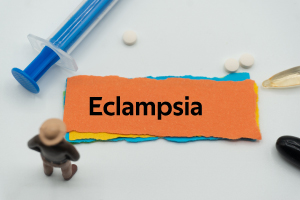

Polyps are noncancerous growths that develop on the mucous membrane of different organs such as nasal passages, colon, stomach, and uterus. Most of these growths are benign but if not removed they can become malignant. This is why it is important to understand what kinds of tissue growths exist, the factors that cause them, the symptoms they imply, and how they can be treated in order to combat these growths and to avoid worsening of the health condition.
Meaning of Polyps
In medical terminology, polyp is a small growth of tissue that can arise in various sites of the body, especially on mucous membranes. While most are not malignant, some can become malignant depending on their site of origin and type.
Types of Polyps
Polyps can occur in different areas of the body and are categorized based on their location and characteristics. Understanding the types of polyps is essential as some may pose health risks, while others are benign.
Here are some common types:
Nasal
These are tumors arising from the mucosal lining of the nasal cavity or paranasal sinuses and are usually secondary to chronic inflammation from asthma, allergy or recurrent infections. According to NIH, sinonasal polyps are benign mucosal swellings that occur in four different histological patterns. The most common type is the edematous, eosinophilic (so-called “allergic”) nasal polyps, which constitutes 85-90% of nasal polyps.
Colorectal
Some of these are located in the colon or rectum and some can develop into colon cancer, which is why they are looked for during colonoscopies.
Endometrial
These are benign tumors that develop in the endometrium and are commonly linked with postmenstrual bleeding. While most are benign, they may be associated with pain and fertility problems.
Gallbladder
These are derived from the gallbladder wall. Many are benign, however, larger ones may be associated with gallbladder cancer.
Stomach
These are also referred to as gastric polyps and develop on the mucous membrane of the stomach, often being an incidental finding during endoscopy. Although most of them are benign, they can transform into gastric cancer.
Cervical
These are usually benign and may be found incidentally during a routine pelvic examination or a PAP smear examination at the lower end of the cervix.
Causes of Polyps
While the exact cause of their formation isn’t always clear, several factors contribute to their development:
- Chronic Inflammation: This may be due to diseases such as asthma, allergies or sinus infections, which cause nasal growths and other types.
- Genetics: People with a family history of these growths or similar diseases, including colon cancer, are more vulnerable. Some inherited diseases such as familial adenomatous polyposis tend to make one be at a high risk of having the disease.
- Diet and Lifestyle: Consumption of foods that are rich in processed foods and red meat and low fiber intake can cause colorectal growths. Obesity and smoking are also considered risk factors especially for colon and gallbladder problems.
- Hormonal Changes: Estrogen is known to have a role in the growth of endometrial and cervical tissues, therefore, postmenopausal women are more likely to develop these growths.
- Age: Colorectal and gallbladder growths are more likely to occur as one grows older.
According to NCBI, polyps arise from the mucosa and can be adenomatous (tubular more than 80%, villous 5-15%, tubulovillous 5-15%), serrated (sessile or conventional), or non-neoplastic (hyperplastic and juvenile).
Treatment Options
Treatment of polyps may include the use of drugs that help shrink the polyps and reduce their inflammation. Treatment options include:
- Medications: Surgery or hormonal treatments may be given to bring down the size of polyps that are likely to be cancerous, for example, uterine or colon polyps.
- Surgical Removal: In some cases, polyps are large, cause symptoms, or are suspected to be cancerous, then surgery may be necessary to remove them. Such procedures include polypectomy which is usually performed for this purpose.
In some cases where the polyps are small and are not causing any symptoms, the doctors may advise the patient to go for follow up examinations to check on the polyps in case they grow or become a problem.
Natural Remedies
Natural remedies have been used for centuries to promote healing and overall wellness, offering natural alternatives to conventional treatments. The following are common causes that may require natural remedies:
- Steam Inhalation: Helps unclog nasal passages.
- Saline Nasal Rinse: May help to wash out the nasal passages and decrease inflammation.
- Turmeric: It has anti-inflammatory effects and can be used when taken in the diet.
- Tea Tree Oil: With its ability to reduce inflammation and fight bacteria, it is safe to dilute and use via steam inhalation.
The Difference Between Endometrial and Gallbladder Growths
Endometrial polyp growths are associated with abnormal vaginal bleeding and may need hormonal therapy or surgery if they are symptomatic. While gallbladder polyps are usually benign and do not cause symptoms, but may present with abdominal pain or nausea, If they are larger than 1 cm or are likely to be malignant, surgical resection may be required.
Prevention
Preventative measures are also type and location dependent. Colorectal growths can be prevented by taking fiber-rich foods and avoiding foods that have been processed. Avoiding smoking and being at a proper weight that is also a good one is also important. Screening tests like colonoscopy for growths in the colon or ultrasound for problems in the gallbladder should be done periodically for those with a family history or are of a certain age.
Conclusion
Although most growths of polyps are benign, they should be treated to avoid adverse effects or even carcinomatous change. It is important to know the various types, signs and the best ways of handling them in order to manage them. A combination of conventional medical care and home remedies as well as changes in diet and other aspects of daily life should help affected people significantly.




